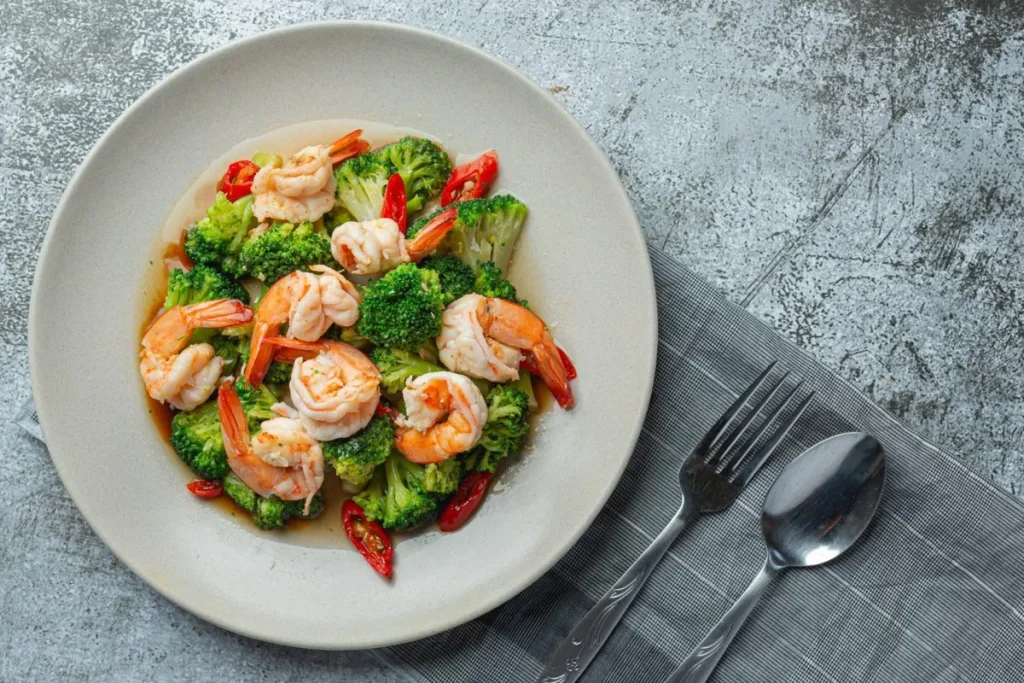
New year, new resolutions and one of them is to improve nutrition. However, the idea of “healthy eating” can often feel overwhelming. With an endless number of diets and wellness trends constantly popping up, not to mention being bombarded with expert opinions, it’s easy to get lost in the noise.
But eating healthier doesn’t mean overhauling your entire lifestyle or giving up your favorite foods. Sometimes, the smallest adjustments can make the biggest difference.
This article will focus on simple, sustainable tweaks to your daily meals that can lead to better nutrition and a healthier you. Let’s jump right in.
Embrace the Healthy Eating Plate Model
The Healthy Eating Plate model outlines what and how much to consume from each food group throughout the day, regardless of whether you’re eating from a plate, a bowl, or any other way.
This model suggests that half of your plate should be filled with a variety of vegetables. One-quarter of the plate is reserved for whole grains such as brown rice, oats, quinoa, and foods made with these grains.
The remaining quarter of your plate should include healthy protein sources such as fish, poultry, beans, and nuts while limiting red and processed meats. Additionally, this model suggests that you use healthy oils like olive or canola in moderation.
The Healthy Eating Plate model emphasizes a balanced approach to meals which is highly important for our overall health.
Prioritize variety and new recipes
This year strive to incorporate a wide variety of foods to enhance your nutrient intake. You can do this by trying out new recipes and opting for diverse food choices.
Try experimenting with at least one new recipe every week. This will bring variety and excitement to your meals while introducing new nutrients. Also, be sure to incorporate a mix of fruits, vegetables, and proteins to maintain a well-rounded diet.
If you don’t want to give up your favorite meals, you can try to experiment with creating a healthier version of your favorite recipe by using new ingredients, herbs, and spices.
Cook at home more often
Kick-off this year by swapping takeout with trying to cook at home more often. This will be much easier on your budget, plus you’ll know exactly what goes into your meals.
Similarly, you’ll be able to choose the quality of food and ingredients you prepare. For example, look for quality meat near me and choose some of the best meat cuts you can find.
Additionally, preparing large portions means you’ll have leftovers for the next day, ensuring another satisfying meal. Home cooking has been linked to a lower risk of obesity and better diet quality, particularly for children.
Mind portion sizes
As mentioned, cooking your own meals will help you adjust your portion sizes. Eating from smaller dinnerware can help control portion sizes and reduce overall food consumption.
Moreover, if you don’t notice you’re eating smaller portions, you’re less likely to compensate by eating more at your next meal. Using smaller dinnerware can trick your brain into perceiving a fuller plate, reducing the likelihood of overeating.
Hydration and beverage choices
The most important step you can make towards better nutrition is to say no to sugary beverages. Sugary beverages are packed with added sugar, which has been associated with various health issues, including heart disease, obesity, and type 2 diabetes. Additionally, the added sugar in these drinks doesn’t affect hunger in the same way that nutrient-dense foods do.
Replace sugary drinks with water, herbal teas, or black coffee. Limit dairy and juice intake to maintain hydration without excessive calories.
Focus on whole foods
In 2025, swap refined ingredients for whole food alternatives. Choose whole grain bread, pasta, and cereals over their refined versions. Also, add more legumes, nuts, and seeds to your meals, as they are high in protein and fiber while low in fat.
Take for instance refined grains, they have been linked to numerous health issues. Whole grains, on the other hand, have been associated with health benefits such as the reduced risk of cancer, diabetes, and heart disease.
Incorporate more fish and seafood
Fish and seafood are an excellent source of omega-3 fatty acids, Vitamin D, and protein. These nutrients are why you should incorporate more fish and seafood into your diet.
Aim for at least two servings of fish per week, focusing on oily varieties like salmon or sardines.
Conclusion
By making these simple tweaks to your diet in 2025, you can greatly enhance your nutritional quality and overall health.
Emphasize balance, variety, and mindful eating to build sustainable habits that support long-term wellness.
